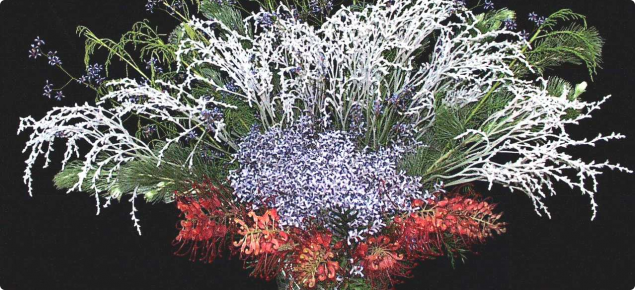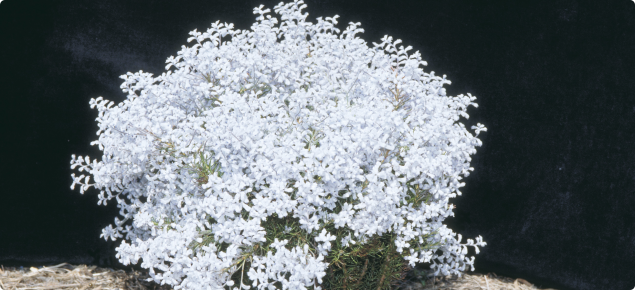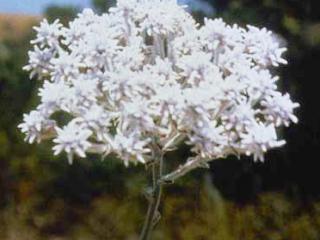Introduction
Smokebushes are in the family Proteaceae and members of the genus Conospermum.
They offer a wide diversity of flower types, ranging from white to blue and flowering from summer to winter.
They are almost entirely picked from natural populations and exported fresh or dried to Japan, Europe and the USA.
Species selection
Six species of conospermum have been selected that can be grown as cutflowers. These include both blue flowering types, Conospermum eatoniae (blue lace) and C. caeruleum (slender smokebush), and white or grey flowering types, C. triplinervium (tree smoke), C. stoechadis (common smokebush), C. incurvum (plume smokebush) and C. crassinervium (tassel smokebush). Not many of these flowers are commercially available today.
Tables 1a and 1b indicate the main characteristics of these six species.
| Species | Conospermum eatoniae | Conospermum caeruleum |
|---|---|---|
| Common name | Blue lace | Slender smokebush |
| Growth habit | Upright | Spreading |
| Flowering period | July-August | July-October |
| Average production | High: more than 50 stems per plant | Medium: 25-50 stems |
| Comments | Prefers warm climates; in high demand | Prefers cooler climates; packs well |
| Species | Conospermum crassinervium | Conospermum triplinervium | Conospermum stoechadis | Conospermum incurvum |
|---|---|---|---|---|
| Common name | Tassel smokebush | Elk smokebush | Common smokebush | Plume smokebush |
| Growth habit | Upright | Upright | Spreading to upright | Spreading to upright |
| Flowering period | December-February | August-November | July-October | August-October |
| Average production | Low: less than 25 stems per plant | High: more than 50 stems per plant | High: more than 50 stems per plant | Medium: 25-50 stems per plant |
| Comments | Late flowering; dries well | Wide area suitability; range of types | High stem production | Small shrub; attractive flowers |
- Conospermum eatoniae has leafless stems with masses of clusters of china blue flowers and is sought after on Japanese markets.
- C. caeruleum has large flat leaves that remain on stems, with fewer blue flower clusters than C. eatoniae.
- C. stoechadis has a grey/white flower panicle and narrow leaves and is a high stem producer.
- C. triplinervium comprises a number of species with broad leaves and various forms from weeping to strong upright stems. One particular form has heavy stems and white hairy flowers and has been named the ‘elk’ smokebush.
- C. incurvum is a smaller plant than C. triplinervium or C. stoechadis and has spikes of leafless stems covered in white flowers with a black tip to the perianth.
- C. crassinervium grows fairly slowly and produces flowers in a corymb forming a tassel. It flowers in summer but continues to flower over an extended period in cultivation.
Climate
Smokebushes can be grown in a wide range of rainfall zones from 350 to 850mm and maximum/minimum average temperatures of 23/10°C. However, stem production may be lower and the flowering period may be shorter if conditions are too extreme.
For example, C. eatoniae performs better in drier, warmer regions while C. caeruleum flowers for longer in cooler regions. Smokebush has some frost tolerance.
Site requirements
Choose a weed and disease-free site, preferably one with minimal or no previous fertiliser history.
Smokebush prefers free-drained, deep acid sand (pHCa 5.8 to 6.8).
It is fairly intolerant of residual soil phosphorus. Some species will tolerate free draining loamy soils.
Early weed control is required to reduce weed presence significantly. This can be achieved by cultivation, knockdown herbicides such as glyphosate and Spray.Seed®, and a pre-emergence treatment.



